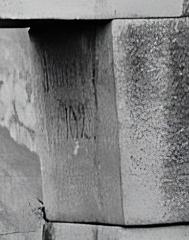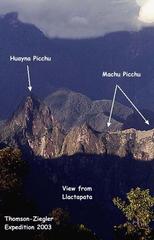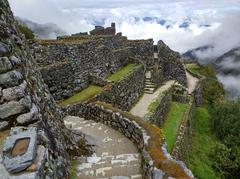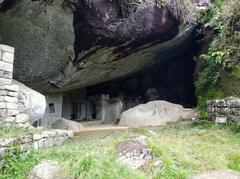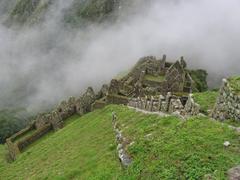Comprehensive Guide to Visiting Phuyupatamarka, Machu Picchu, Peru
Date: 01/08/2024
Introduction
Phuyupatamarca, often referred to as “La Ciudad entre la Niebla” or “The City Above the Clouds,” is an extraordinary archaeological site nestled along the Inca Trail in Peru’s Urubamba Valley. Known for its historical, architectural, and spiritual significance, this site stands as a testament to the ingenuity and devotion of the Inca civilization. Perched at an altitude of approximately 3,600 meters (11,800 feet) above sea level, Phuyupatamarca offers visitors a unique opportunity to explore well-preserved Inca ruins, including agricultural terraces, ritual baths, and intricate irrigation systems. The site’s name, which translates to “cloud-level town” in Quechua, aptly describes its frequent envelopment in mist and clouds, adding to its mystical allure (Wikipedia).
Constructed in the 15th century during the height of the Inca Empire, Phuyupatamarca served as a crucial stopover for pilgrims and travelers en route to Machu Picchu. The Inca Trail itself was a vital network of pathways facilitating trade, communication, and military movements across the empire (History Hit). This comprehensive guide aims to delve deep into the origins, architectural marvels, and spiritual significance of Phuyupatamarca, while also providing practical visitor information, travel tips, and insights into nearby attractions.
Table of Contents
- Introduction
- Historical Background
- Architectural Features
- Religious and Ceremonial Importance
- Strategic Significance
- Practical Visitor Information
- Nearby Attractions
- Preservation and Modern-Day Significance
- Conclusion
- FAQ
Historical Background
Origins and Construction
Phuyupatamarca, often referred to as “La Ciudad entre la Niebla” or “The City Above the Clouds,” is an archaeological site situated along the Inca Trail in the Urubamba Valley of Peru. The site is perched at an altitude of approximately 3,600 meters (11,800 feet) above sea level, making it one of the highest points along the trail (Wikipedia). The name Phuyupatamarca translates to “cloud-level town” in Quechua, aptly describing its frequent shrouding in mist and clouds.
The construction of Phuyupatamarca is attributed to the 15th century during the height of the Inca Empire. This period was marked by extensive architectural and agricultural advancements, as the Incas expanded their territory across the Andean region. The site was strategically built as a stopover for pilgrims and travelers en route to Machu Picchu, the famed Inca citadel. The Inca Trail itself was a crucial network of pathways that connected various parts of the empire, facilitating trade, communication, and military movements (History Hit).
Architectural Features
Phuyupatamarca is renowned for its well-preserved Inca ruins, which include agricultural terraces, ritual baths, a temple, and an intricate irrigation system. The agricultural terraces are built into the hillside, showcasing the Inca’s advanced engineering skills in maximizing arable land in mountainous terrain. These terraces were likely used for growing crops such as maize and potatoes, which were staple foods in the Inca diet.
One of the most striking features of Phuyupatamarca is its series of five small stone baths. These baths are fed by a sophisticated irrigation system that channels fresh water from nearby springs. During the wet season, these baths are filled with running water, which is believed to have been used for ritualistic and ceremonial purposes. The presence of these baths indicates the site’s significance in Inca religious practices (History Hit).
Religious and Ceremonial Importance
The Inca civilization placed great emphasis on religious and ceremonial activities, and Phuyupatamarca was no exception. The site’s elevation and its proximity to the sky likely contributed to its spiritual significance. The Incas worshipped various deities associated with natural elements, including the sun (Inti), the moon (Mama Killa), and the earth (Pachamama). The ritual baths at Phuyupatamarca are considered evidence of water worship, which was an integral part of Inca religious practices.
The temple at Phuyupatamarca further underscores the site’s ceremonial importance. Although the exact nature of the rituals performed here remains a subject of speculation, it is believed that the temple served as a place for offerings and prayers to the gods. The site’s strategic location along the Inca Trail also suggests that it may have been a place for pilgrims to purify themselves before continuing their journey to Machu Picchu (History Hit).
Strategic Significance
Phuyupatamarca’s location along the Inca Trail highlights its strategic importance within the Inca Empire. The trail itself was a vital artery that connected Cusco, the capital of the empire, to various other regions. Phuyupatamarca served as a key waypoint for messengers, traders, and pilgrims traveling between Cusco and Machu Picchu. The site’s elevation provided a vantage point for monitoring the surrounding valleys, making it an ideal location for both religious and military purposes.
The observation platforms at Phuyupatamarca offer panoramic views of the Urubamba Valley and the surrounding mountains. These platforms were likely used for both ceremonial and practical purposes, allowing the Incas to observe astronomical events and monitor the movement of people and goods along the trail. The site’s strategic location and its well-preserved ruins make it a valuable window into the logistical and spiritual life of the Inca civilization (History Hit).
Practical Visitor Information
Visiting Hours and Tickets
Phuyupatamarca is accessible year-round, but the best time to visit is during the dry season, from May to September. The site is open 24 hours, but it is recommended to visit during daylight hours for the best experience. Tickets for the Inca Trail, which includes access to Phuyupatamarca, must be purchased in advance through authorized agencies. Prices vary depending on the season and the type of tour chosen.
Travel Tips
- Preparation: Due to the high altitude, it is essential to acclimate properly before embarking on the trek. Ensure you are in good physical condition and carry necessary supplies, including water, snacks, and appropriate clothing.
- Guided Tours: Consider booking a guided tour to enhance your experience. Knowledgeable guides can provide in-depth information about the site’s history, architecture, and significance.
- Photography: Phuyupatamarca offers numerous photographic opportunities. The early morning and late afternoon light, combined with the mist and clouds, create a magical atmosphere for capturing stunning images.
Nearby Attractions
- Machu Picchu: The iconic Inca citadel is the final destination for many trekkers on the Inca Trail. Its well-preserved ruins and breathtaking location make it one of the most visited sites in the world.
- Wiñay Wayna: Another significant Inca site along the Inca Trail, known for its impressive terraces and stunning views of the Urubamba Valley.
- Urubamba Valley: The valley itself is home to numerous historical sites, traditional villages, and beautiful landscapes, offering a glimpse into the rich cultural heritage of the Andes.
Preservation and Modern-Day Significance
Today, Phuyupatamarca is one of the most picturesque and well-preserved stops along the Inca Trail. Its remote location and elevation have helped protect it from the ravages of time and human activity. The site continues to attract thousands of visitors each year, who are drawn by its historical significance and breathtaking views.
Visiting Phuyupatamarca typically involves a multi-day trek along the Inca Trail, with many organized tours camping at the site overnight. This allows visitors to experience the site’s ethereal beauty at dawn and dusk, when the clouds often envelop the ruins, creating a surreal and mystical atmosphere. The site’s preservation is a testament to the enduring legacy of the Inca civilization and its remarkable achievements in architecture, agriculture, and spirituality (History Hit).
Conclusion
Phuyupatamarca stands as a remarkable example of Inca ingenuity and devotion. Its historical, architectural, and spiritual significance make it an essential stop for anyone exploring the Inca Trail and seeking to understand the rich cultural heritage of the Andes. The site’s preservation and accessibility offer a unique opportunity to step back in time and witness the grandeur of the Inca Empire firsthand. Whether you are a history enthusiast, an adventure seeker, or a spiritual traveler, Phuyupatamarca promises an unforgettable experience.
FAQ
Q: What are the visiting hours for Phuyupatamarca? A: Phuyupatamarca is accessible 24 hours, but it is recommended to visit during daylight hours for the best experience.
Q: How can I purchase tickets to visit Phuyupatamarca? A: Tickets for the Inca Trail, which includes access to Phuyupatamarca, must be purchased in advance through authorized agencies.
Q: What is the best time of year to visit Phuyupatamarca? A: The best time to visit is during the dry season, from May to September.
Q: Are guided tours available? A: Yes, guided tours are available and recommended for an enhanced experience.
Q: What should I bring for the trek to Phuyupatamarca? A: Ensure you have water, snacks, appropriate clothing, and necessary supplies for high-altitude trekking.
Stay up to date with the latest travel tips and information by following us on social media or visiting our website regularly. Plan your visit to Phuyupatamarca today and embark on a journey through history and natural beauty.
References
- Wikipedia, 2023, Puyupatamarca
- History Hit, 2023, Phuyupatamarca
- Evolution Treks Peru, 2023, Phuyupatamarca
- Ticket Machu Picchu, 2023, Phuyupatamarca
- Lonely Planet, 2023, Phuyupatamarca
- Lorenzo Expeditions, 2023, Phuyupatamarca
- Half Digital Nomad, 2023, Inca Trail Hiking Guide
- Inca Trail Permits, 2023, Inca Trail Permits
- Leave No Trace, 2023, 7 Principles
